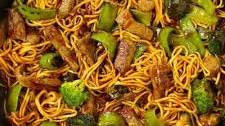Savour the Flavours of Louisiana with this Classic Gumbo Recipe

The Perfect Gumbo Recipe: A Taste of Louisiana
Gumbo is a traditional dish that hails from the heart of Louisiana, known for its rich flavors and comforting warmth. This iconic Creole and Cajun dish is a delightful blend of African, French, Spanish, and Native American influences, creating a culinary masterpiece that has stood the test of time.
Ingredients:
- 1/2 cup vegetable oil
- 1/2 cup all-purpose flour
- 1 onion, diced
- 1 green bell pepper, diced
- 3 celery stalks, diced
- 3 cloves garlic, minced
- 1 pound andouille sausage, sliced
- 1 pound chicken thighs, cut into chunks
- 4 cups chicken broth
- 1 can diced tomatoes
- 2 bay leaves
- 1 teaspoon thyme
- Salt and pepper to taste
Instructions:
Roux:
In a large pot, heat vegetable oil over medium heat. Slowly whisk in flour to create a roux. Stir continuously until the roux turns a deep brown colour.
Gumbo:
Add onions, bell pepper, celery, and garlic to the roux. Cook until vegetables are soft.
Add andouille sausage and chicken to the pot. Cook until meat is browned.
Pour in chicken broth and diced tomatoes. Add bay leaves, thyme, salt, and pepper. Bring to a boil then reduce heat and simmer for 1-2 hours.
Serve hot over rice or with crusty bread for an authentic taste of Louisiana!
This gumbo recipe captures the essence of Louisiana cuisine with its bold flavours and soul-warming goodness. Whether enjoyed on a chilly evening or shared with loved ones at a festive gathering, gumbo never fails to delight the senses and warm the heart.
Bon appétit!
Six Essential Tips for Perfecting Your Gumbo Recipe
- Use a dark roux for a rich flavour.
- Include the ‘holy trinity’ of onions, celery, and bell peppers for authentic taste.
- Add okra for thickness and a unique flavour.
- Season generously with herbs and spices like thyme, oregano, and paprika.
- Choose quality sausage or seafood to enhance the dish.
- Simmer the gumbo slowly to allow the flavours to develop fully.
Use a dark roux for a rich flavour.
To enhance the depth of flavour in your gumbo, it is recommended to use a dark roux. The process of slowly cooking the flour and oil mixture until it reaches a deep brown colour not only adds a rich, nutty taste to the dish but also contributes to its characteristic complexity. A dark roux serves as the flavourful foundation of gumbo, infusing every spoonful with a deep, satisfying essence that truly embodies the soul of Louisiana cuisine.
Include the ‘holy trinity’ of onions, celery, and bell peppers for authentic taste.
To achieve an authentic taste in your gumbo recipe, it is essential to incorporate the ‘holy trinity’ of onions, celery, and bell peppers. This classic combination forms the flavourful base of many Creole and Cajun dishes, infusing your gumbo with a depth of taste that is unmistakably Louisiana. The harmonious blend of these aromatic vegetables adds complexity and richness to the dish, elevating it to a level of true culinary excellence that captures the essence of traditional Southern cooking.
Add okra for thickness and a unique flavour.
For an extra touch of authenticity and flavour in your gumbo recipe, consider adding okra. Not only does okra contribute to the thickness of the dish, but it also brings a unique taste that enhances the overall complexity of flavours. In traditional Louisiana cooking, okra is a staple ingredient known for its ability to enrich stews and soups with a subtle earthy sweetness. Give your gumbo a delicious twist by incorporating okra into the mix, elevating it to a whole new level of culinary delight.
Season generously with herbs and spices like thyme, oregano, and paprika.
To enhance the depth of flavour in your gumbo, it is essential to season generously with a blend of aromatic herbs and spices such as thyme, oregano, and paprika. These ingredients not only add layers of complexity to the dish but also infuse it with a tantalising aroma that will entice your taste buds. The combination of thyme’s earthy notes, oregano’s herbaceous freshness, and paprika’s smoky richness creates a harmonious balance that elevates the overall taste profile of your gumbo, ensuring a culinary experience that is truly unforgettable.
Choose quality sausage or seafood to enhance the dish.
When preparing a gumbo recipe, selecting high-quality sausage or seafood can significantly elevate the flavour profile of the dish. The choice of premium ingredients such as andouille sausage or fresh seafood not only adds depth and richness to the gumbo but also enhances its overall taste experience. By opting for top-notch sausage or seafood, you can ensure that each bite is bursting with deliciousness, making your gumbo a standout culinary delight that will be savoured and enjoyed by all who partake in this classic Louisiana dish.
Simmer the gumbo slowly to allow the flavours to develop fully.
To enhance the depth and richness of your gumbo, it is essential to simmer the dish slowly, allowing the medley of flavours to meld and develop fully. By taking your time with the simmering process, each ingredient has the opportunity to release its essence and infuse the broth with a harmonious blend of tastes. This patient approach ensures that every spoonful of gumbo is bursting with layers of deliciousness, capturing the true essence of this beloved Louisiana dish.


